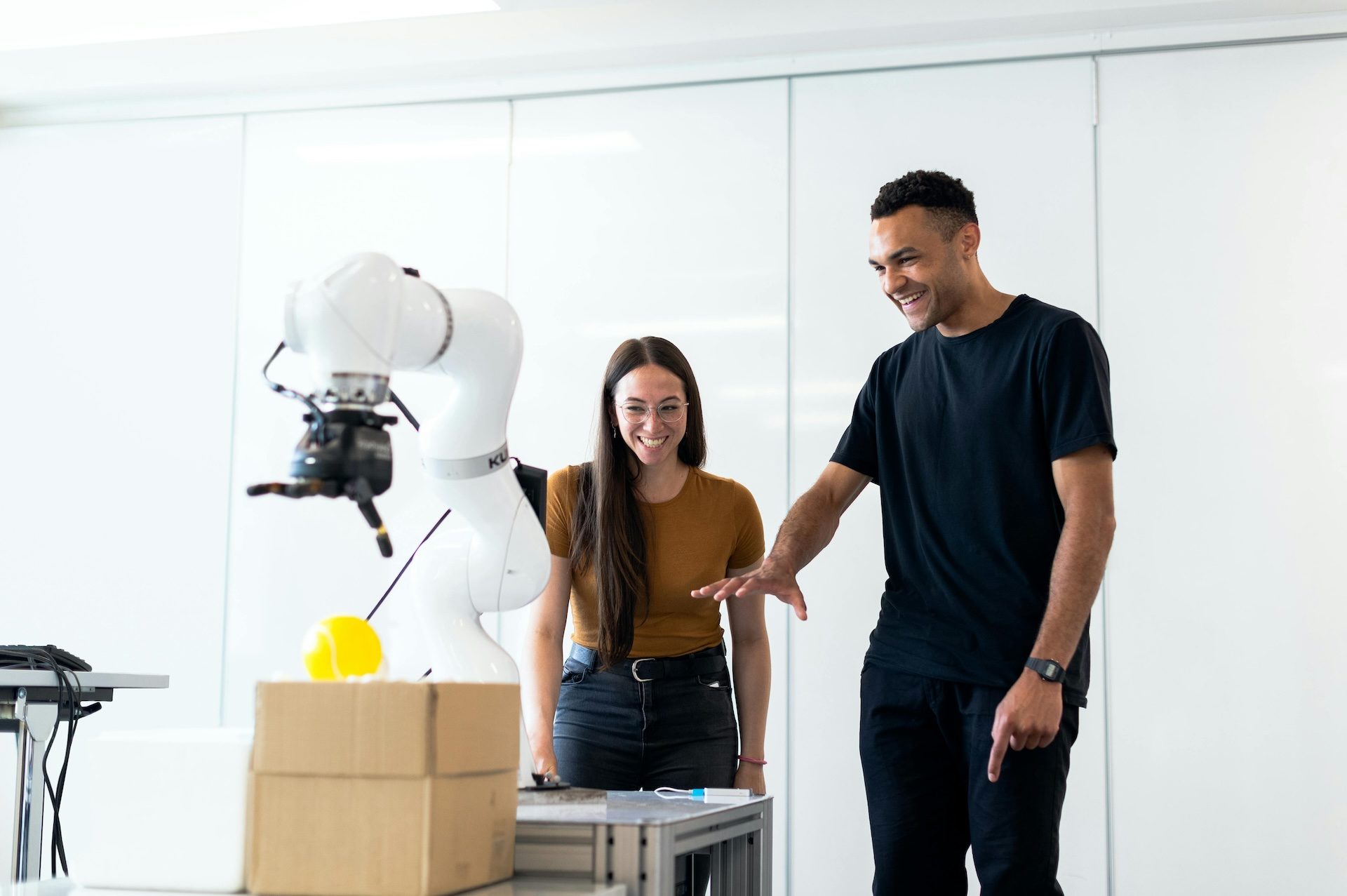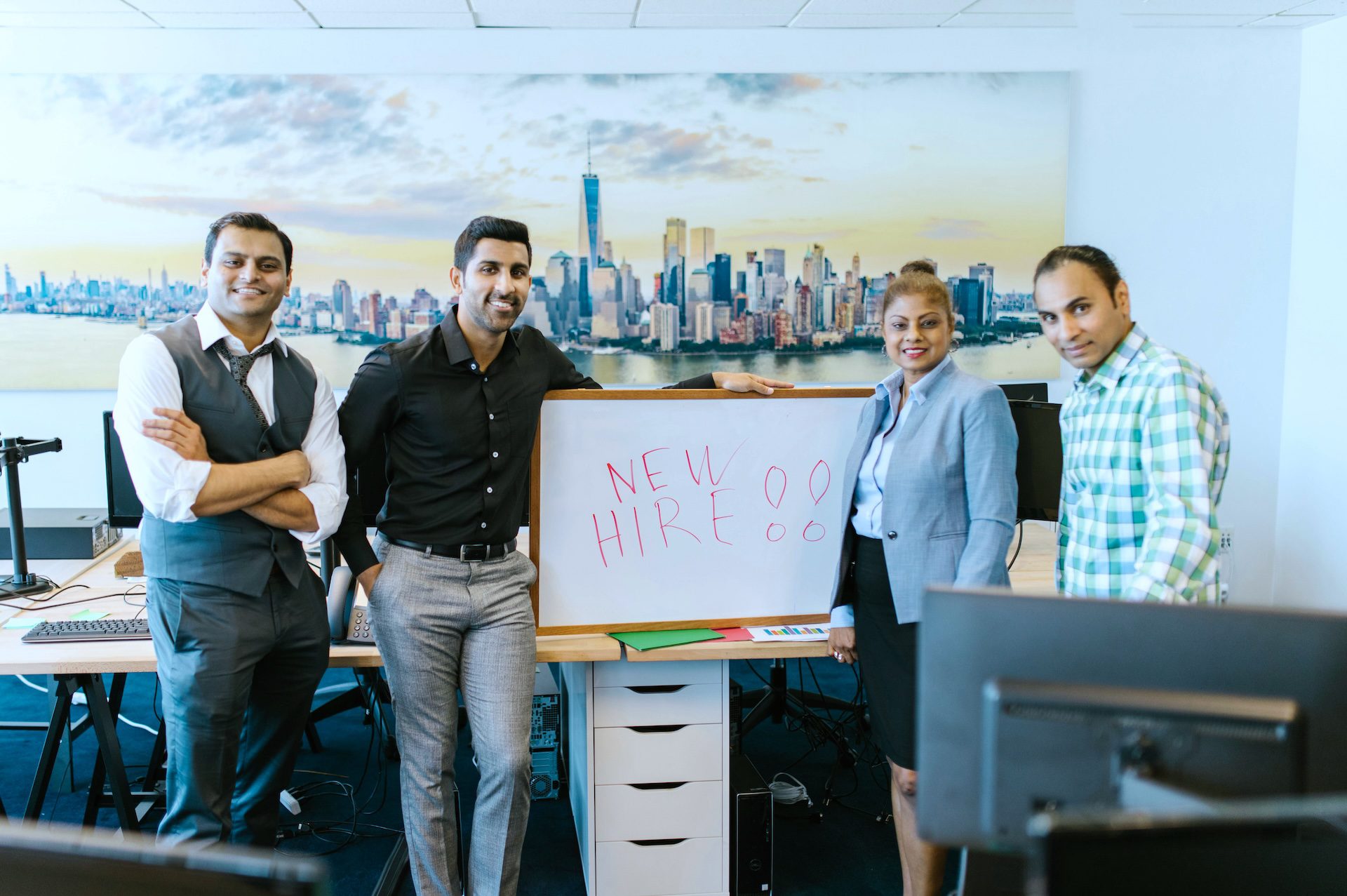AI in the workplace and robotics advance, companies face the dual challenge and opportunity of integrating these technologies into their workforce.
Artificial Intelligence and robots can be both good and bad as they offer increased efficiency, safety, and precision, but they also raise concerns about job loss, skill gaps, and ethical implications.
Table of Contents
AI and Robots Used in the Workplace
The replacement of certain jobs by AI and robots can drive significant benefits, but it also raises critical concerns that need careful consideration.
Robots are currently used in various workplace settings such as:
- Manufacturing: Robots perform tasks such as assembly, and packaging with high precision.
- Healthcare: Surgical robots assist doctors in performing intricate procedures.
- Logistics: Robots automate warehouse operations, including sorting, packing, and transporting goods.
- Customer Service: Service robots and chatbots handle customer inquiries and provide assistance.
Artificial Intelligence in HR is used in processes such as:
- Recruitment and talent acquisition
- Employee engagement and retention
- Performance Management
- HR questions from employees
Positive Effects of AI in the Future
-
Efficiency and Productivity
AI and robots can operate 24/7 without fatigue, leading to higher output and efficiency. This reduces downtime and increases overall productivity.
-
Cost Savings
Automation of tasks can lead to significant cost reductions in the long term, including savings on labour costs, reduced error rates, and lower operational expenses.
-
Accuracy and Consistency
Artificial Intelligence systems and robots perform tasks with high precision and consistency, proving a consistent customer service and reducing the likelihood of errors by improving quality control.
-
Scalability
Automation allows startups and scaleups to grow the operation quickly and efficiently, meeting increased demand without a corresponding rise in labour costs.
Disadvantages of Replacing Jobs with AI and Robots
While AI in the workplace and robots can replace employees in many repetitive and hazardous tasks, they cannot entirely replace all job roles that require creativity, emotional intelligence, and complex decision-making.
The speed advantage of AI and robots over employees varies by task. For repetitive and precise tasks, robots can work several times faster than employees, operating continuously without the need for breaks.
-
Redeployment and Redundancy
The most immediate and significant impact of automation is redeployment and redundancies. Employees in roles that are automated may face unemployment and financial insecurity However, the integration could also lead to the design of new roles which brings opportunities for employees to be redeployed in positions.
-
Skills Gap
When introducing Artificial Intelligence in the workplace, there might be a mismatch between the skills of employees and the skills required for new roles created by AI and robotics, leading to a skills gap. This brings in opportunities for training and development learning new skills.
-
Loss of the Human Touch
Certain roles, particularly those involving human interaction, may suffer from a loss of personal touch and empathy that Artificial Intelligence and robots cannot replicate.
-
Ethical and Privacy Concerns
The use of Artificial Intelligence raises ethical issues related to data privacy, surveillance, and the potential for biased decision-making if AI systems are not properly managed.
-
Costs for Implementation, Maintenance and Repairs
Significant investment is required to purchase and implement robotic systems and the regular maintenance of AI and robots could be costly to repair.
-
Dependency on Technology
Over reliance on Artificial Intelligence and robots can create vulnerabilities if systems fail with less employees to back up the daily processes.
Steps to Replace Jobs with AI and Robots
Step 1. Identify Repetitive and Low-Skill Tasks
Start by analysing the current jobs to identify tasks that are repetitive, rule-based, and time-consuming. These tasks are prime candidates for automation.
Step 2. Implement AI-Powered Tools and Robotics
Search, select and deploy AI tools for data analysis, customer service, and administrative tasks. Use robots for manufacturing, logistics, and other physical tasks.
Step 3. Develop a Transition Plan
Create a clear plan for the roles that will be automated, including timelines and support structures for affected employees.
Step 4. Upskill and Reskill Employees
Invest in training programmes to support employees transition to new roles that AI and robotics cannot easily replace, such as those requiring creativity, critical thinking, and emotional intelligence.
Step 5. Communicate in a Transparent Way
Maintain open lines of communication with employees about the changes, explaining the reasons behind automation and the benefits it brings to the organisation and its workforce. Foster a culture of positive change and collaboration.
AI in the Future
Business Transition & Employee Transformation
To navigate the transition towards AI in the workplace and a robotics-enhanced workforce, organisations must balance the benefits of automation with a commitment to their employees’ well-being. The HR department should support the organisation in:
- Developing long-term strategies that incorporate both automation and human capital, ensuring that the workforce evolves alongside technological advancements.
- Implementing support programmes such as career counselling, retraining, and outplacement services.
- Adopting a socially responsible approach to automation, considering the broader impact on communities and the economy.




